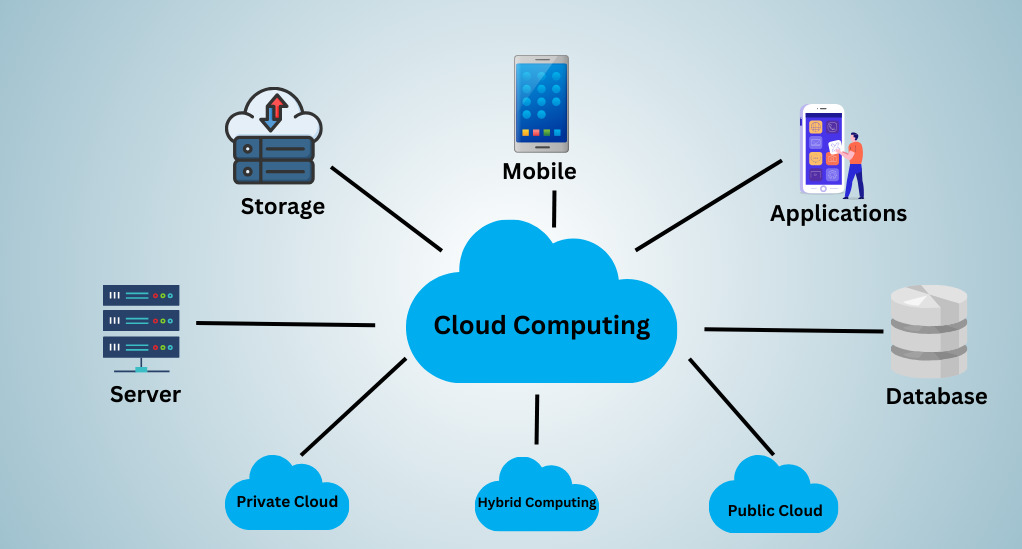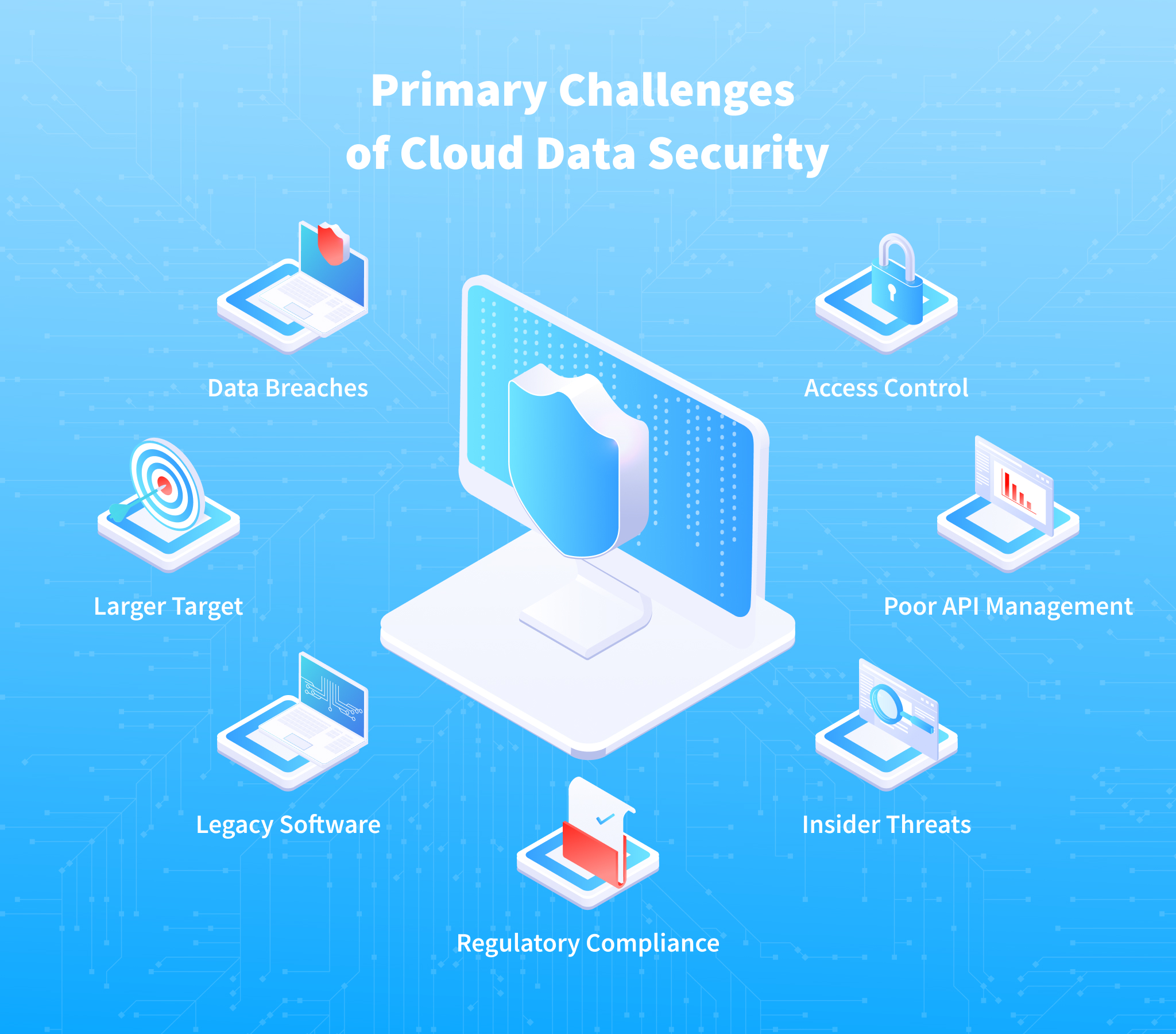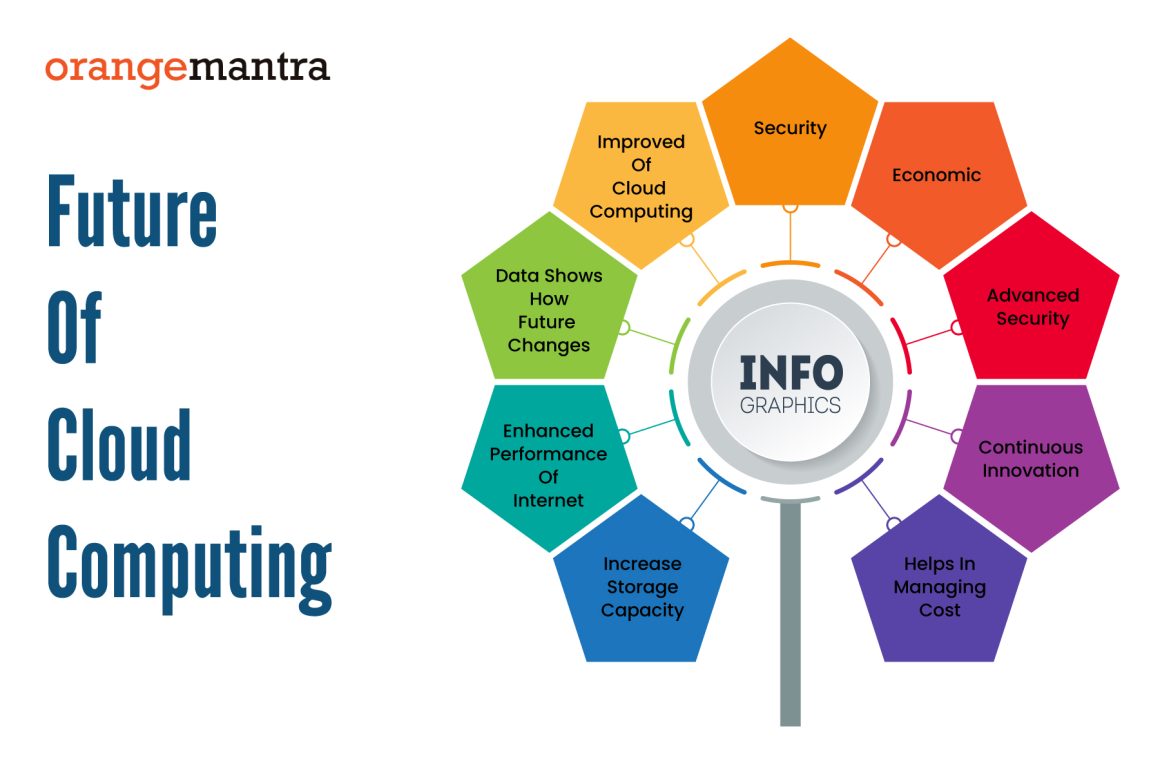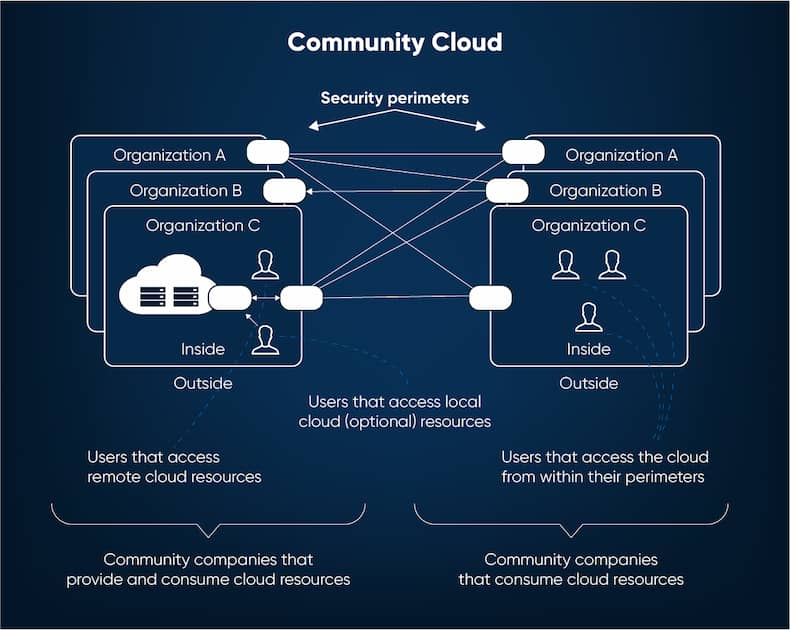
Understanding Cloud Computing
Definition of Cloud Computing
Cloud computing is the delivery of computing services—including servers, storage, databases, networking, software, and analytics—over the internet (“the cloud”) rather than on local servers or personal devices. This approach allows for flexible resources, faster innovation, and economies of scale. I once transitioned my small business’s IT needs to a cloud service, and the difference was phenomenal. Instead of investing in expensive hardware, I could access cutting-edge software and vast storage capabilities at a fraction of the cost.
Types of Cloud Computing Models
Cloud computing encompasses various models that cater to diverse business needs. The primary types include:
- Public Cloud: Resources are owned and operated by third-party service providers and delivered over the internet. Examples include Amazon Web Services (AWS) and Microsoft Azure.
- Private Cloud: This model involves a dedicated infrastructure that is solely used by one organization, providing greater control over resources and data protection.
- Hybrid Cloud: Combining public and private clouds, organizations enjoy the flexibility of a public cloud while retaining sensitive data on a private cloud.
Each model has its unique benefits, catering to businesses of varying sizes and requirements.
Benefits of Cloud Computing
The benefits of cloud computing are extensive and can significantly alter how businesses operate. Here are some key advantages:
- Cost Efficiency: Reduces the need for hardware and maintenance costs.
- Scalability: Effortlessly scale services based on demand without overspending.
- Accessibility: Access data and applications from anywhere with an internet connection.
- Disaster Recovery: Offers reliable solutions for data backup and recovery, minimizing downtime.
Given these benefits, it’s no wonder that organizations are increasingly turning to cloud computing as a strategic resource. By embracing this technology, businesses can not only save costs but also drive innovation—a topic we will explore further in the following sections.

Cost-Effectiveness of Cloud Computing
Comparison of Traditional IT Costs vs. Cloud Computing Costs
When it comes to choosing between traditional IT setups and cloud computing, the financial implications make a significant difference. Traditional IT often requires hefty upfront investments in hardware, software licenses, and maintenance. For instance, a company may spend tens of thousands of dollars just to set up and maintain servers and local storage. In contrast, cloud computing offers a subscription-based model, allowing businesses to pay only for what they use.
Here’s a simplified breakdown:
| Expenses | Traditional IT | Cloud Computing |
|---|---|---|
| Initial Setup Costs | High (hardware/software) | Low (subscription model) |
| Maintenance Costs | Ongoing (IT staff, repairs) | Minimal (provider-managed) |
| Scalability Costs | Significant (new equipment) | Virtually none (on-demand) |
Factors Contributing to Cost Savings with Cloud Computing
Several key factors contribute to the overall cost savings associated with cloud computing:
- Reduced Hardware Costs: Eliminate the need for physical servers and storage.
- Lower IT Personnel Expenses: With maintenance handled by cloud providers, less staff is needed.
- Energy Savings: Cloud solutions often consume less power than traditional equipment.
- Flexibility and Pay-as-You-Go Models: Scale resources based on current needs without long-term commitment.
These factors not only cut expenditures but also free up cash flow for other strategic investments.
Real-Life Examples of Cost Savings
Many businesses have effectively reduced costs through cloud computing deployment. For example, a startup I worked with saved over 30% on IT expenses by transitioning to the cloud. They no longer had to purchase expensive servers or worry about maintenance; instead, they utilized scalable solutions offered by providers like Google Cloud.
Another notable case is a mid-sized retail company that switched to cloud-based inventory management. By doing so, they cut their operational costs by 25%, allowing them to invest in customer experience enhancements.
In essence, cloud computing not only streamlines IT expenses but also empowers organizations to innovate and adapt quickly in a dynamic marketplace. The next section will delve deeper into optimizing resources and the scalability benefits provided by cloud technology.

Optimizing Resources and Scalability
Resource Management in Cloud Computing
Resource management in cloud computing revolves around efficiently allocating and utilizing computing resources to maximize performance and minimize costs. Unlike traditional models, where resources are statically assigned, cloud environments are dynamic and adaptable. For instance, if a company experiences seasonal spikes in traffic—perhaps an online store during the holidays—they can easily allocate more resources for that peak period and scale back afterward.
Effective resource management strategies include:
- Monitoring Usage: Tools like Amazon CloudWatch or Azure Monitor help track resource consumption.
- Automation: Implementing auto-scaling features that adjust resource allocation based on real-time demand.
- Cost Allocation Tags: Assigning tags to resources for better visibility and expense tracking.
Scalability Benefits of Cloud Computing
One of the most significant advantages of cloud computing is its inherent scalability. Businesses can easily scale up or down based on their requirements without incurring the costs and complications associated with hardware upgrades.
For instance, during a product launch, a software company can provision additional servers to handle increased user traffic. Once the event concludes, they can effortlessly scale back, avoiding wasted resources. This flexibility allows organizations to be more agile and responsive to market changes.
Ways to Optimize Resources for Cost Savings
To truly capitalize on cloud computing, businesses should embrace resource optimization strategies:
- Right-Sizing Resources: Assessing and adjusting resource sizes according to actual needs ensures you’re not over-provisioning.
- Utilizing Spot Instances: Many cloud providers offer unused capacity at a lower cost, which is particularly useful for flexible workloads.
- Leverage Reserved Instances: If you know you’ll use specific resources for a long time, committing to a reservation can yield significant discounts.
For example, a tech firm I consulted for optimized their cloud resources and saved nearly 40% in monthly expenditures simply by implementing these strategies. By focusing on resource management and harnessing scalability, businesses not only save on costs but also enhance their operational efficiency. The subsequent section will explore security and data protection mechanisms in cloud computing, vital for safeguarding these resources.

Security and Data Protection in Cloud Computing
Importance of Security in Cloud Computing
As businesses increasingly transition to cloud computing, the importance of robust security measures cannot be overstated. Cloud environments often store sensitive information, such as personal data and intellectual property, making them prime targets for cyberattacks. For instance, I recall working with a financial client that experienced a data breach. They quickly realized that their cloud service provider’s lack of security features put them at risk.
Understanding the shared responsibility model in cloud security is vital. While cloud providers offer foundational security, companies still need to implement their own protocols to protect data. This means employing strong user authentication, understanding your provider’s policies, and regularly updating your security measures.
Data Protection Measures in Cloud Computing
To safeguard data effectively in the cloud, several key protection measures should be implemented:
- Encryption: Encrypting sensitive data both at rest and in transit ensures that even if data is intercepted, it remains unreadable to unauthorized parties.
- Access Controls: Establishing strict user access controls helps ensure that only authorized personnel can access sensitive information.
- Regular Security Audits: Conducting periodic audits and risk assessments can identify vulnerabilities within your systems.
Implementing these data protection measures not only helps in compliance with regulations but also builds trust with customers who expect their data to be safe.
Cost Efficiency through Enhanced Security
Investing in security may seem counterintuitive to cost-saving approaches, but enhancing security often leads to significant long-term savings. By preventing data breaches, organizations can avoid hefty fines, legal fees, and reputational damages.
For instance, a retailer I know initially hesitated to invest in advanced security measures to protect customer data. However, after a security audit revealed vulnerabilities and the potential for breach costs, they decided to invest in a comprehensive security solution. The return on investment proved worthwhile, as they not only safeguarded their data but also enhanced their brand reputation, resulting in increased customer trust and retention.
In conclusion, while cloud computing provides enhanced flexibility and scalability, it’s crucial to prioritize security and data protection. The next section will delve into case studies that illustrate tangible cost savings gained from effective cloud implementations, reinforcing the value of these practices.
Case Studies: Cost Savings through Cloud Computing
Enterprise A: Cost Reduction Analysis
Let’s take a closer look at Enterprise A, a manufacturing company that faced escalating costs associated with its on-premises IT infrastructure. After performing a comprehensive cost analysis, they discovered they were spending nearly 50% more on hardware upgrades, maintenance, and energy bills than they would in a cloud environment. Transitioning to a public cloud solution not only eliminated the need for hardware but also reduced operational costs tied to IT staff.
By adopting Infrastructure as a Service (IaaS), Enterprise A calculated a total cost reduction of about 30% annually. This enabled them to reallocate savings toward innovation, enhancing their production processes and staying competitive in a rapidly changing market.
Enterprise B: Scalability and Cost Efficiency
Another compelling example comes from Enterprise B, a rapidly growing e-commerce platform. During peaks like Black Friday, their existing system struggled to handle the surge in traffic, resulting in downtime and potential lost revenue. By migrating to a scalable cloud solution, they leveraged auto-scaling features that automatically adjusted resources based on user activity.
This adaptability led to a 40% improvement in performance during peak times and reduced the need for costly over-provisioning during slower periods, which previously wasted resources. Additionally, they saw a 25% overall cost reduction compared to their traditional infrastructure, as they only paid for resources when needed.
Lessons Learned from Successful Implementations
From these case studies, several key lessons emerge:
- Evaluate Comprehensive Costs: Businesses should conduct thorough financial analyses to identify all hidden costs associated with on-premises solutions.
- Embrace Scalability: Adopting a cloud model that allows for scaling ensures businesses can effectively manage varying resource needs without incurring unnecessary expenses.
- Foster Innovation: The savings realized through cloud implementations can be reinvested in innovation, ultimately driving better performance and customer satisfaction.
These experiences highlight how committed organizations can harness the benefits of cloud computing to achieve significant cost savings while enhancing operational efficiency. As we delve deeper into future trends and innovations in cloud solutions, it’s clear that the journey is just beginning.

Future Trends and Innovations in Cloud Computing
Evolution of Cost Savings Strategies
As cloud computing continues to evolve, so do the strategies businesses employ to maximize cost savings. Organizations are increasingly turning to optimized pricing models, leveraging advanced analytics to assess and refine their resource usage continually. For instance, predictive analytics can forecast demand trends, allowing organizations to adjust their cloud resource allocation proactively rather than reactively.
Additionally, multi-cloud strategies are gaining traction, enabling businesses to distribute workloads across various providers. This approach not only promotes cost efficiency by avoiding vendor lock-in but also harnesses the best features of different platforms.
Impact of Emerging Technologies
Emerging technologies are playing a pivotal role in shaping the future of cloud computing. Artificial Intelligence (AI) and Machine Learning (ML) are transforming resource management by automating optimization processes and enhancing predictive capabilities. These technologies can analyze usage data to recommend optimal configurations and identify potential wasteful spending areas.
Moreover, edge computing is becoming increasingly important, particularly with the rise of the Internet of Things (IoT). By processing data closer to its source, businesses can reduce latency, keep bandwidth usage manageable, and further optimize cloud resource allocation.
Predictions for Future Cost Efficiency
Looking ahead, the potential for cost efficiency in cloud computing seems promising. Analysts predict that as competition amongst cloud providers intensifies, prices for services will continue to decrease, bringing even more accessibility to businesses of all sizes.
Also, enhanced automation rules and self-service capabilities will empower businesses to manage their resources without needing extensive IT oversight. This streamlined approach can lead to additional savings in personnel costs while fostering a culture of agility.
In summary, the future of cloud computing is not just about technological advancements; it’s about how these innovations can be harnessed to drive significant cost efficiencies. As organizations adapt and adopt these trends, they’ll be better positioned to thrive in a competitive landscape. With this understanding, we can now appreciate the substantial financial benefits that cloud computing offers while emphasizing the importance of continuous innovation and adaptation.

Conclusion: The Financial Benefits of Cloud Computing
Recap of Cost Savings Opportunities
Throughout this exploration of cloud computing, it’s clear that the financial benefits are substantial and multifaceted. Organizations have access to various cost-saving opportunities, including:
- Reduced Infrastructure Costs: Transitioning to the cloud eliminates the need for expensive hardware and maintenance.
- Pay-as-You-Go Models: This flexibility allows companies to pay only for the resources they utilize, reducing waste and optimizing budgets.
- Scalability: Companies can quickly scale resources up or down based on demand, ensuring they never overpay for unused capacity.
These strategies not only help cut costs but also provide a means for companies to reinvest in growth.
Advantages of Embracing Cloud Solutions
Embracing cloud solutions offers numerous advantages beyond financial gains. Businesses can enhance their operational agility, allowing them to respond swiftly to market changes. For example, during my time working with a retail organization, the adoption of cloud solutions enabled them to launch new products rapidly in response to shifting customer preferences.
Additionally, the cloud promotes teamwork and collaboration, as employees can access needed tools and data from any location. This increased collaboration can lead to improved productivity and creativity within teams, ultimately contributing to the bottom line.
Final Thoughts on Long-Term Financial Gains
In conclusion, the long-term financial gains associated with cloud computing are compelling. As we’ve seen, the combination of immediate cost savings, enhanced operational efficiency, and strategic reinvestment positions organizations to thrive in today’s dynamic business landscape.
The financial benefits of cloud computing are not just a short-term win; they pave the way for sustainable growth. As businesses continue to adapt and innovate, embracing cloud technology will undoubtedly be a cornerstone for future success. For organizations looking to remain competitive, there’s no time like the present to explore the transformative potential the cloud offers. By making informed decisions and strategically leveraging cloud solutions, businesses can unlock new opportunities that drive financial prosperity and operational excellence.

